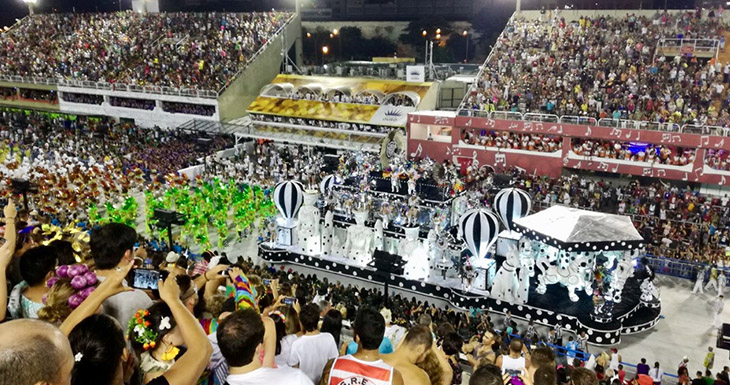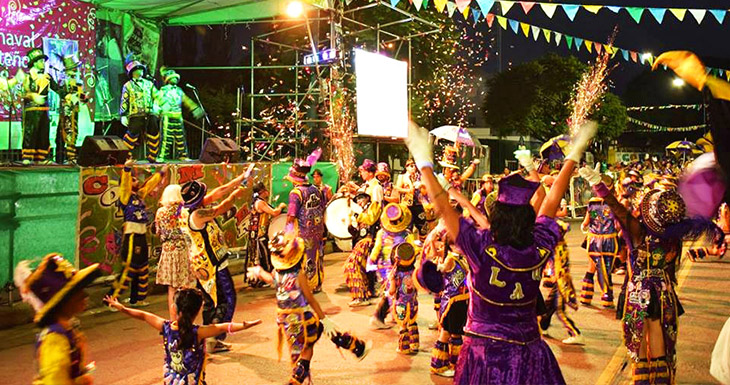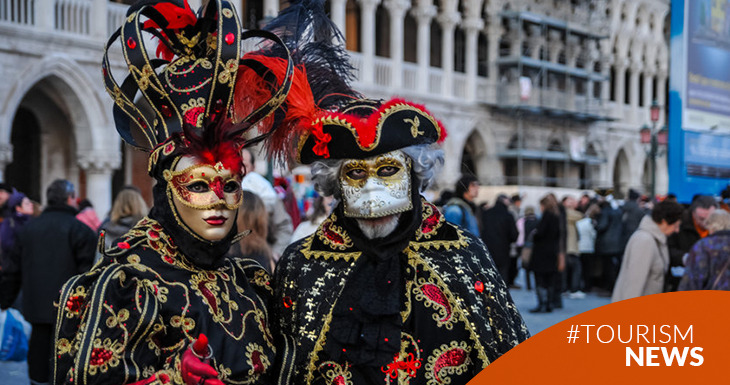The origin of carnival in the world is a debatable topic, today it is mainly a Christian holiday celebrated mainly in countries with large Catholic populations.
However, carnival began long before the rise of Christianity and was a noted celebration in many pagan religious calendars. It has been speculated that the carnival originated about 5000 years ago with the Egyptians, others point out that it was the Greeks, since there were festivities that occurred around the cycles of nature and the universe in both cultures.
In ancient times, long before the rise of Christianity, people had celebrations around the winter and summer solstice, and the spring and fall equinoxes. And those same people were reluctant to give up these celebrations, even after becoming Christians.
The word carnival comes from the Latin words carnis (meat) and levare (“to leave out”), because right after carnival comes Lent: 40 days of sacrifice that no meat will be eaten before Easter.
In this article we tell you which are the countries of the world where the carnival is still celebrated:
Venice's Carnival
The Carnival of Venice reached its peak in the 18th century, a time when aristocrats from many different places attended the festival, and even princes and nobles escaped to enjoy the event.
In order not to be recognized and thus maintain their anonymity in situations of transgression, the characters of the nobility used the primitive masks known as Larva and Moretta. The Larva was a white mask that was part of a costume known as Bauta. The Moretta was worn by women and was an oval mask with a black veil.
For centuries it was the escape route for citizens to escape from the great control of the Venetian government. With the occupation of Venice by Napoleon's army, the Carnival was prohibited, and was recovered in 1979.
How is it currently developing?
During the 10 days that it lasts - between the end of January and mid-February - people dress up and go out to the streets to walk and take photos, either in organized or improvised parades; as well as private parties that are difficult to attend without knowing someone. Today there are several types of traditional masks in the Venetian Carnival, the most common are: the bauta, the columbina, the moretta, the volto and the Della peste doctor.
Since 1979, the Venice Carnival has once again conquered the scene thanks to the efforts of the people and the support of some institutions, which together put on a wonderful show. Tourists fill the streets of Venice, the magical city on water, and it is considered one of the best carnivals in the world.
Brazil carnival
The Brazilian Carnival has its origins in two aspects, the first related to the Roman traditions that led to the Europe of the conquest. And the second is the result of the slave trade process.
We can say that Brazil is a country where the European colonies left dissimilar traces and forged a tradition made up of different customs, typical dances and joys in each region. This has made the Carnival take different forms in each place.
For example, the celebration of Rio de Janeiro, which takes place four days before Ash Wednesday, takes place in the Sambadrome. But in cities like Bahia and Recife, the celebrations are held directly in the streets and those present dance to the sound of electric trios. Currently, the Carnivals are more elaborate and include the participation of the well-known samba "scolas". Rio de Janeiro, for example, has more than 70 Samba schools and all of them can be seen parading during the 4 days of Carnival. Schools choose their own themes, on which the music and lyrics are based, prepare their costumes and floats, and rehearse throughout the year to win the parade competition.
In this way, the Carnivals of Brazil give life to traditions and collect hundreds of years of memory in a few days.

Carnival of Uruguay, the longest in the world
The history of the Uruguayan Carnival also comes from Europe. The conquerors brought their traditions, legends and Christian and pagan celebrations. In Colonial times, on Carnival days, black slaves from Montevideo covered themselves with colorful tunics and went out to the streets to go to the city walls, at the foot of which they were allowed to sing their songs and perform their dances.
The first carnival ensembles date back to the 1960s. Then the first murgas arose, although at that time they were known as masquerades. It is estimated that the first comparsa, Raza Africana, was created in 1865
The murga is the artistic manifestation most intimately linked to the heart of Uruguayans. Its pillars are based on stinging protest, satire, humor and irony. From the beginning it was characterized by its criticism, by its successful caricatures of society and political figures. Currently, the Uruguayan carnival is the longest in the world, beginning in late January and extending until early March.
One of the most anticipated moments of the carnival is the Parade of Calls of Montevideo that takes place in the Barrios Sur and Palermo. It evokes the encounters of the black slaves who met outside the city during the 18th and 19th centuries. In this festival there is also no lack of shows by street musicians, parodists, comedians, magazines and troupes that take place both in the tablados of the neighborhoods of Montevideo, and in the Ramón Collazo Summer Theater, where the Official Contest of Carnival Groups is held. It is estimated that the Uruguayan carnival, in just eight weeks, sells more tickets in this country than all other sporting and cultural events combined, including football. And it was between the end of the 19th century and the beginning of the 20th, when this carnival became one of the longest in the world.

The carnivals of Argentina: a fusion of indigenous, Spanish culture and Brazilian spirit
The indigenous cultures of the north merged with the Spanish influence, a syncretism from which unique carnivals were born, such as those celebrated in Jujuy, Salta or La Rioja. Along the coast, in the carnivals of Gualeguaychú and Corrientes, parades of Brazilian influence dominate, which in turn inherited African and European customs.
These celebrations had different periods, depending on the social situation that was taking place in Argentina. For example, during the dictatorship, this type of street demonstrations were stopped, so that later, as of 1983, the activity resumed.
However, in the 19th century they had a relevance and magnitude comparable to the celebrations in Rio de Janeiro. The succession of water games, comparsa parades and dances in the clubs demonstrated the multiethnic character of the porteño carnival. Well into the 20th century, one of the moments of greatest splendor of these celebrations occurred within the framework of the centenary of the May Revolution. In the official carnival celebrations on Avenida de Mayo, a large number of costumed people paraded, societies, choirs, orchestras, carriages and gaucho groups.
And it was from these years that the different neighborhood parades were developed with greater intensity where a large number of people attended from the early hours of the afternoon touring the streets in all directions.
Other places in the world where you can experience the carnival party are:
- Tenerife: with an average of 5 million visitors each year, the Tenerife carnival undoubtedly stands out for its presentation of queens, the parade, and with all the festivities
- Cádiz: the centenary contest of coplas, choirs, comparsas and quartets that is celebrated in the Gran Teatro Falla is one of the events of greatest interest during these days.
- Colombia: It is recognized as a great multicultural party that reflects the feeling of the Caribbean.
- France: Nice is a real live show, a battle of flowers is celebrated in which young people throw petals in a war full of color.
- New Orleans: ideal for jazz lovers, it culminates with the famous Fat Tuesday, where all kinds of eccentricities are experienced
- Germany: The main event is Rose Monday, which features a 6km parade filled with items such as chocolate boxes, perfumes and other small gifts that are thrown from the floats.
Ready for the carnival? You cannot miss this popular celebration full of masks, music, parades, laughter and lots of dancing.


